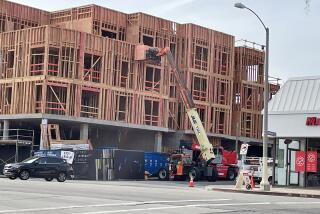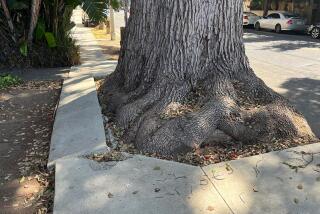Hearings Schedule OKd on Rerouting Freeway Traffic
- Share via
SANTA ANA — Responding to residents’ complaints about traffic problems caused by freeway-interchange construction in northwest Santa Ana, the City Council has approved a schedule of public meetings to formulate a traffic plan.
Approval of the meetings, on a 6-0 vote of the council Monday, comes two weeks after residents clashed over a plan proposed by the Floral Park Traffic Committee to restrict Santa Ana Freeway traffic through part of the neighborhood by using barriers and turn restrictions.
About 30 residents Monday denounced the council’s action as unfair, claiming that it places the committee in charge of the meetings and also allows the panel to formulate the city’s final recommendation on the plan.
Speaking on behalf of the opposition group, Santa Ana resident Tom Stewart compared the city’s plan to “leaving the wolf in charge of the henhouse.”
The schedule approved Monday by the council calls for public meetings in each of four sub-sections of northwest Santa Ana on Dec. 11, 12, 17 an 18, followed by an advisory vote of residents in January. After city staffers have reviewed the results, the plan will be sent to the council for consideration on March 2.
Last month, the committee proposed the installation of traffic barriers at most of the entrances to the neighborhood bounded by Bristol Street on the west, 17th Street on the south, Broadway on the east, and Memory Lane, Sherwood Lane and the Santa Ana Freeway on the north. Committee members said the changes were necessary because of the increased speed and volume of traffic.
For example, the committee contended that the rerouting of traffic on Santa Clara Avenue has increased the flow by 2,000 cars a day since the Flower Street and La Veta Avenue/Bristol Street freeway off-ramps were closed.
However, at the council’s Nov. 18 meeting, dozens of residents who live outside the area represented by the committee criticized the plan, calling it ill-conceived and potentially dangerous. They said it would isolate the neighborhood and merely reshuffle traffic problems into surrounding areas where they live.
More to Read
Sign up for Essential California
The most important California stories and recommendations in your inbox every morning.
You may occasionally receive promotional content from the Los Angeles Times.










